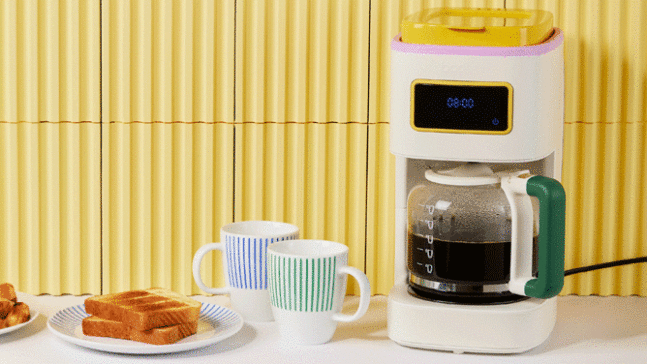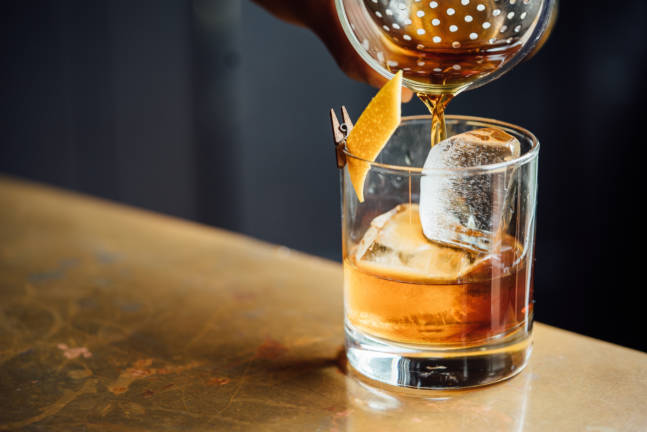Nitro beers are far from new, but the category is getting a lot of hype in the U.S. thanks to big brewers like Samuel Adams and Founders releasing their respective Nitro Beer Project and Nitro Draft Series. And while it might not be a noble gas, nitrogen definitely results in noble beers.
The vast majority of the beer you’ve consumed in your lifetime is force-carbonated. It’s a method in which additional CO2 is dissolved into the beer before it’s bottled, kegged, or poured directly into my cupped hands. The result is beer that’s fresh for much longer than the cask ales of ye olden days. That doesn’t mean there aren’t options beyond additional carbonation though, like say… nitrogenation. But what is nitro beer?
Guinness is the most well known nitro beer on the market, even if you never realized that’s what made it different. There’s a good reason for their status, too. They invented nitro beer. In the 1950s, Michael Ash had the brilliant idea that beer could be made using nitrogen, and he was hired by Guinness to make it happen. The process took 4 years to perfect, but in 1959, pints of Guinness began using nitrogen to achieve the creamy taste and signature cascading effect for which it’s known.
Nitro beers are created by adding a mixture of gasses that’s 70% N2 and 30% CO2. And while there’s plenty of chemistry at play that’s well beyond me, there are a few easy ways to recognize differences between nitrogenated and carbonated beer.

N2 bubbles are significantly smaller than CO2 bubbles. Their small size makes N2 bubbles more stable, resulting in a thick, long-lasting head. It’s a frat party’s worst nightmare but a beer lover’s wet dream. The bubble size also contributes to the telltale cascading effect.
If you’ve ever watched the bubbles in a Guinness, you’ll know what we mean by cascading. Many have wondered how it’s possible for gas filled bubbles to sink instead of rise, but the answer is pretty simple. As the bubbles rise in the center of the glass, beer is pushed up and to the side. As the beer falls back down along the side of the glass it pulls some of these tiny bubbles with it, creating the mesmerizing visual.
Nitrogen doesn’t just affect the visuals of a beer either. You can tell the difference the second the heavenly nectar hits your mouth. Whereas carbonation helps make a beer crisp, lively, and in some cases bitter, nitrogen smooths out the flavors and makes the overall mouthfeel much creamier. The same beer side by side, one nitro and one standard, will be worlds apart. Try both if you happen to be in a bar with options on tap. It’ll figuratively blow your mind.
Speaking of taps, they play a big roll in nitro beers. Not only does a special gas blend (also 70% N2 and 30% CO2) force the beer to the tap, the nozzle itself is unique. Unlike Frank the Tank’s Red Dragon, the nozzle on nitro taps have a restrictor plate added to slow down the pour and aerate the beer.
Guinness has had a monopoly on “that one weird tap” for decades, which will likely cause problems as more breweries jump into the fray. Some bars are adding more nitro lines, but it’s not a big focus for many. Unfortunately that means most of these awesome nitro beers being produced might never find a home in your local bar.
Thankfully Guinness also invented the widget. No, not the kids’ TV show about an adventurous alien. They invented a little plastic ball that releases nitrogen into the beer once the can or bottle is opened. It’s almost as fun to watch as the show, and it means you can have the same great experience from a can as you would from a tap. Left Hand Brewing took it a step further in 2011 by introducing America’s first nitrogenated bottle of beer without a widget.
Brewing great beer is certainly an art form, but it’s mostly science. Beer has been around since the negative 30th century, and it’s been brewed in its current form since the 9th century. Using nitrogen to replace some carbonation is just one of the latest of many tweaks experienced over those 1,200 years, so enjoy the variety; it’s the spice of beer life.
Here are a few nitro beers to try:

Sam Adams – Nitro IPA:
Jim Koch experimented with nitro beers from ’93-’96 and it was an epic failure. Thankfully the consumers are ready this time around because they’re back with the Nitro Beer Project. In the past nitro has primarily been used in stouts and porters, but Sam Adams cranked the hops to normally absurd levels and managed to make an incredibly interesting Nitro IPA. Link

Oskar Blues – Old Chub Nitro
This is the perfect beer to use as a comparison tool. Grab a can of Old Chub and a can of OC Nitro, pour them into pints, and try one right after the other. Who knows which one you’ll prefer, but you’ll be able to see and taste the difference in an instant. Plus, people need to buy more scotch ales so that more breweries start making them. That’s just me being selfish though. Link

Founders – Nitro Rubaeus
Rubaeus is proof that fruit beer can be a glorious style when made well. It’s also a great example of a beer that changes significantly with the use of nitrogen. The signature tartness is reined in and the confusing experience of creamy raspberries will cause you to repeatedly sip, seeking some sort of explanation, until the pint is gone in mere minutes. Order another and try again. Link

Left Hand – Milk Stout Nitro
These guys are the OGs of American craft nitro. They even have videos demonstrating the proper way to pour their beer. Hint: aggressively. You’ve most likely had Milk Stout Nitro or Sawtooth Nitro by now, but I’d lose my license to drink if I didn’t include them. Link



